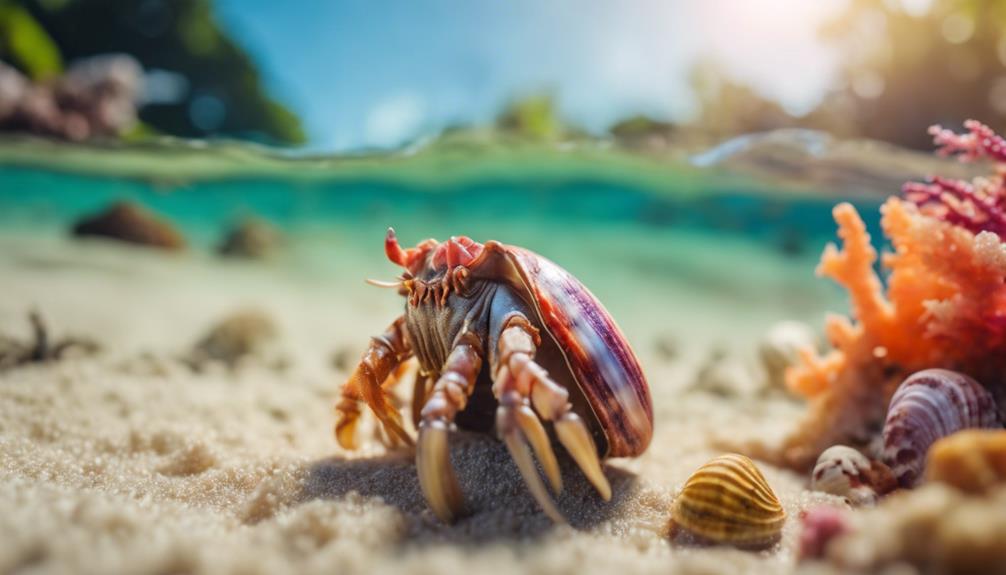As you explore the vast oceanic expanse, imagine encountering creatures both majestic and tiny, all sheltered within their intricate shells.
But did you know there's more than meets the eye to these shell-dwelling inhabitants?
From the ancient wisdom embodied by sea turtles to the ingenious adaptations of hermit crabs, each sea animal with a shell holds a unique tale waiting to be uncovered.
Get ready to uncover the mysteries and surprises that lie beneath the surface as we investigate into the intriguing world of these 11 mesmerizing marine beings.
Turtle
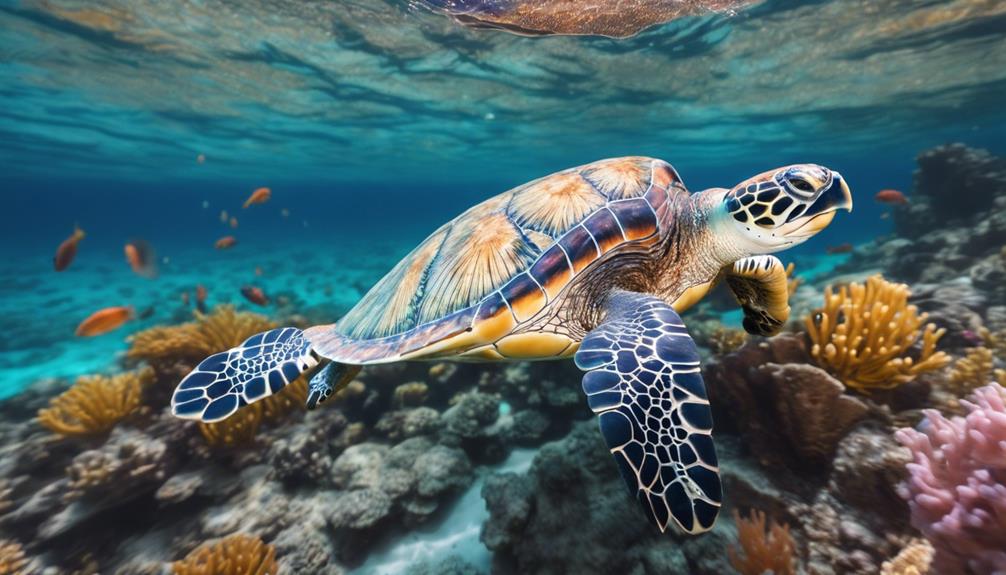
Turtles, known for their distinctive shells, are fascinating sea creatures that play an important role in marine ecosystems. These incredible animals have been around for millions of years, evolving into various species that inhabit oceans, rivers, and even land. With their hard shells providing protection, turtles navigate the waters with grace and agility. They're essential to the ecosystem as they help maintain healthy seagrass beds and coral reefs by feeding on sponges, jellyfish, and algae.
As a turtle enthusiast, you might be amazed to learn that these remarkable creatures have an incredible sense of navigation, often traveling vast distances between feeding and nesting grounds with astonishing precision. Their nesting habits are also intriguing, with female turtles returning to the same beaches where they were born to lay their eggs.
Crab
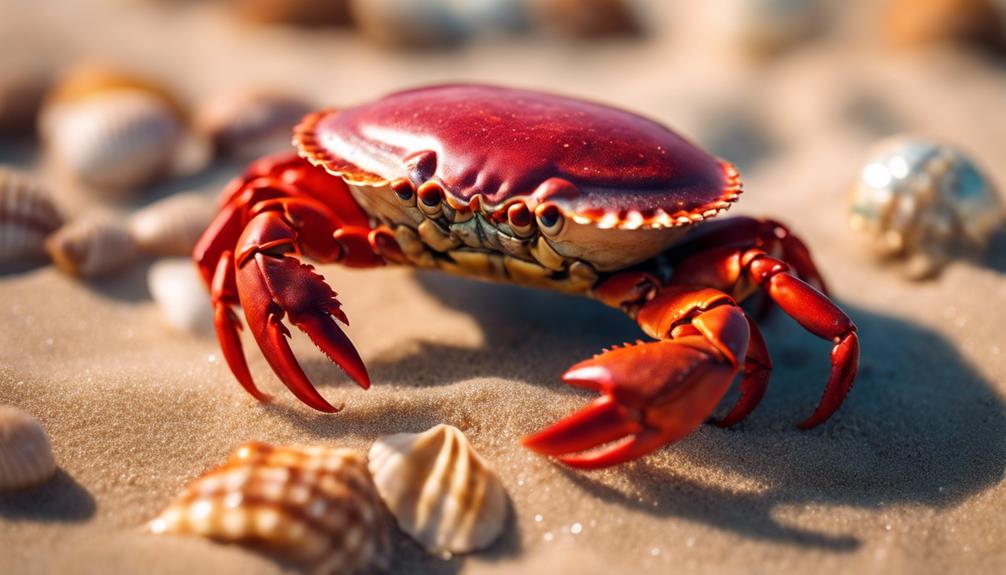
As you explore the fascinating world of sea creatures, the crab stands out as a unique and intriguing marine animal with its hard exoskeleton and sideways scuttling movement. Crabs belong to the crustacean family and are known for their distinct appearance, with ten legs, a pair of claws, and a flattened body. These creatures are incredibly diverse, with over 6,700 species found in various marine habitats worldwide.
One of the most remarkable features of crabs is their ability to regenerate limbs if they're damaged or lost, a handy adaptation for survival. They play a critical role in marine ecosystems by scavenging on dead plants and animals, helping to clean up the ocean floor. Crabs also serve as a food source for many larger predators, contributing to the delicate balance of marine food chains.
Next time you spot a crab scuttling along the shore, take a moment to appreciate the unique characteristics and important role these fascinating creatures play in the underwater world.
Snail
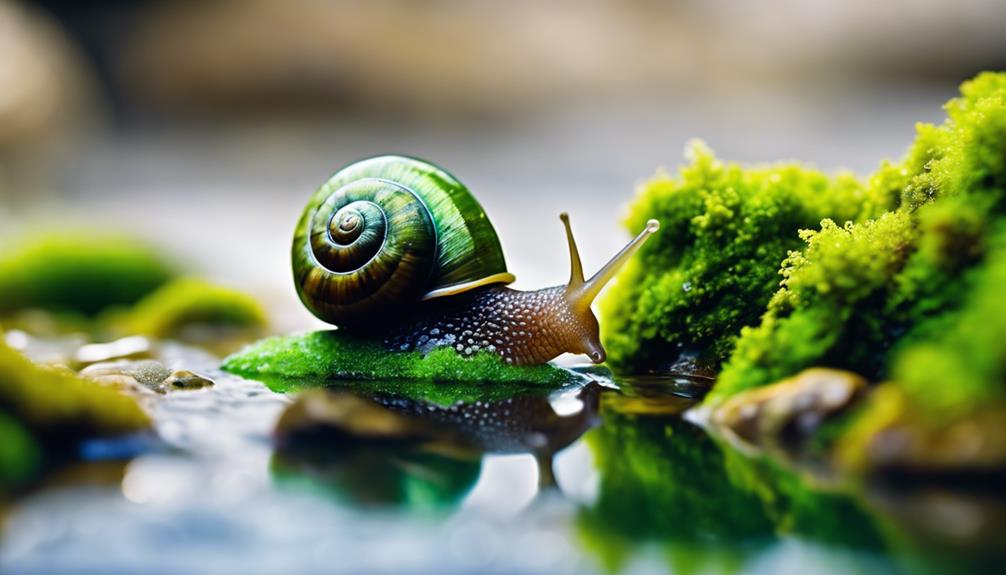
When exploring sea animals with shells, the snail emerges as a fascinating marine creature with its distinctive spiral shell and slow, deliberate movements. Snails are known for their unique ability to carry their protective homes on their backs, offering a safe retreat when needed. These mollusks come in various sizes, from tiny species measuring a few millimeters to larger snails that can reach several inches in length. Their shells aren't just for protection; they also serve as a means of regulating internal moisture levels, preventing desiccation.
One intriguing fact about snails is their radula, a specialized feeding organ that helps them scrape off food like algae or decaying plant matter. Despite their reputation for being slow movers, snails can actually travel significant distances in search of food or better living conditions. Their rhythmic gliding motion is mesmerizing to observe, showcasing nature's wonders in the underwater world. Keep an eye out for these charming creatures during your coastal explorations, as each snail species has its own unique characteristics waiting to be discovered.
Clam
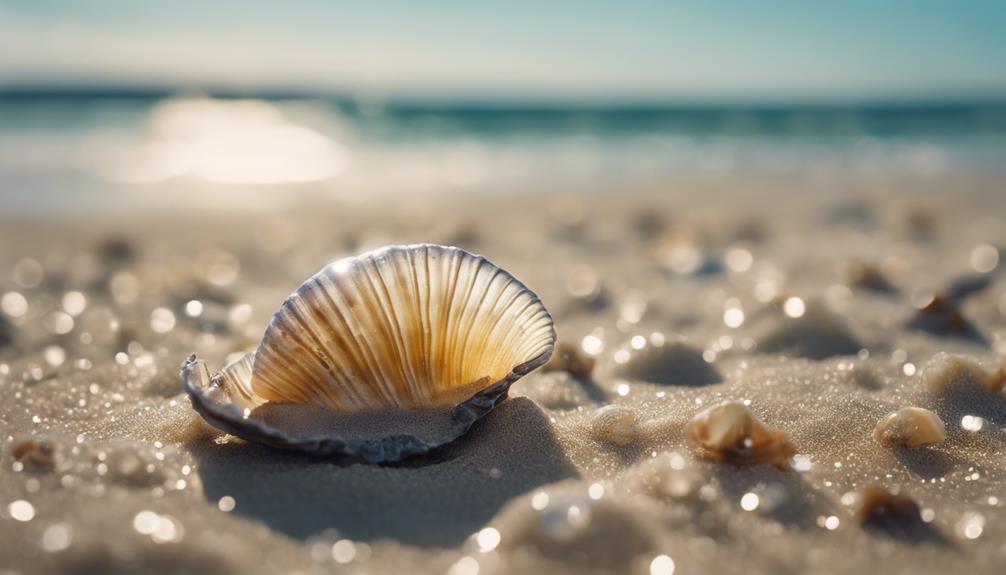
Nestled in the sandy ocean floor, clams thrive in their underwater habitat, showcasing their unique shell structures and filtering feeding mechanism. These bivalve mollusks have a fascinating way of life. With their hinged shells, clams can tightly close up to protect themselves from predators and maintain moisture during low tide.
Clams are filter feeders, meaning they draw in water and filter out tiny particles like plankton and algae for nourishment. This process not only sustains the clam but also helps in cleaning the surrounding water.
Remarkably, clams can live for a long time, with some species reaching over 500 years old! Their longevity and ability to adapt to various marine environments make them essential members of the ocean ecosystem.
Next time you walk along the beach, keep an eye out for these remarkable creatures buried beneath the sand, silently contributing to the health of our oceans.
Lobster
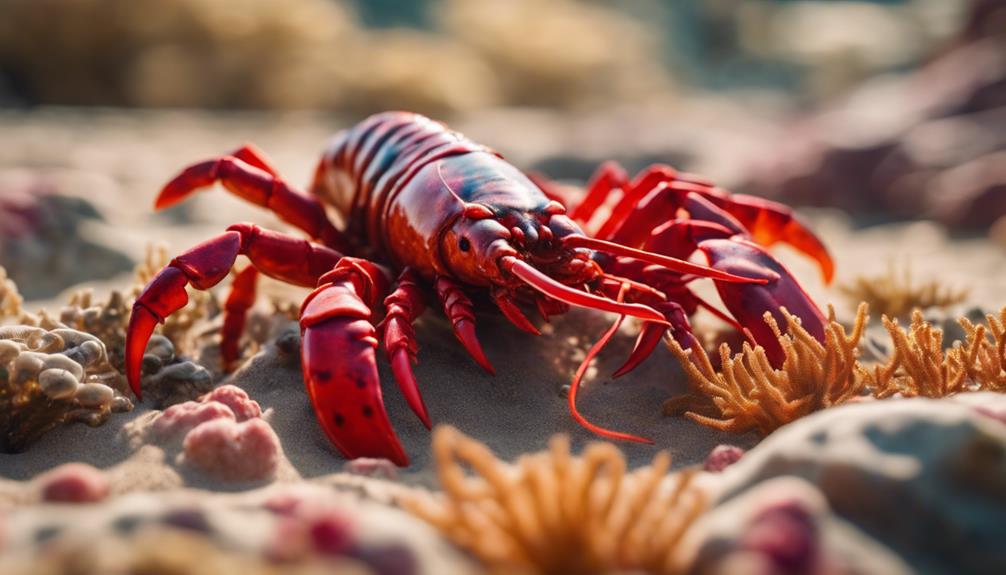
Discover the fascinating world of lobsters, crustaceans known for their distinctive claws and intricate shell patterns. Lobsters aren't only renowned for their delicious taste but also for their unique biology. These creatures belong to the family Nephropidae and are found in various colors like blue, green, and even orange. Their impressive claws serve multiple purposes, from defense to catching prey. Remarkably, lobsters can regenerate lost limbs, a remarkable ability that aids in their survival.
These marine creatures are experts at camouflage, blending into their surroundings to avoid predators. Their hard exoskeletons provide protection and support, showcasing intricate patterns that help them remain hidden on the ocean floor. Lobsters are also known for their strong senses, particularly their keen sense of smell, which helps them locate food over long distances.
Next time you encounter a lobster, admire not just its tasty meat but also its remarkable adaptations and survival strategies in the vast ocean.
Oyster
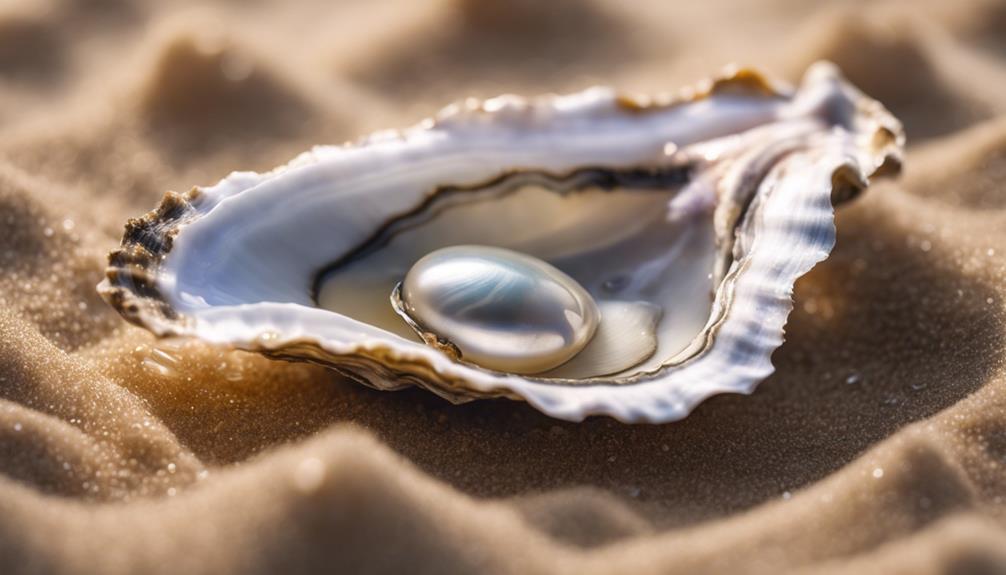
With their unique ability to filter water and create pearls, oysters are fascinating sea creatures that play a vital role in marine ecosystems. Oysters are bivalve mollusks found in oceans worldwide. These shellfish are filter feeders, meaning they help maintain water quality by filtering out algae and other particles. In addition to their ecological importance, oysters are also enjoyed as a delicacy in many cuisines.
Oysters have a hard, irregularly shaped shell that protects their soft bodies. They're known for their ability to produce pearls, which are formed when an irritant such as a grain of sand becomes trapped inside the oyster's shell. The oyster then secretes layers of nacre, a crystalline substance, around the irritant, creating a pearl.
Due to their filter feeding habits, oysters can improve water clarity and quality in their habitats. This makes them essential for maintaining balanced marine ecosystems. Next time you enjoy oysters, remember the important role these shellfish play in the underwater world.
Conch
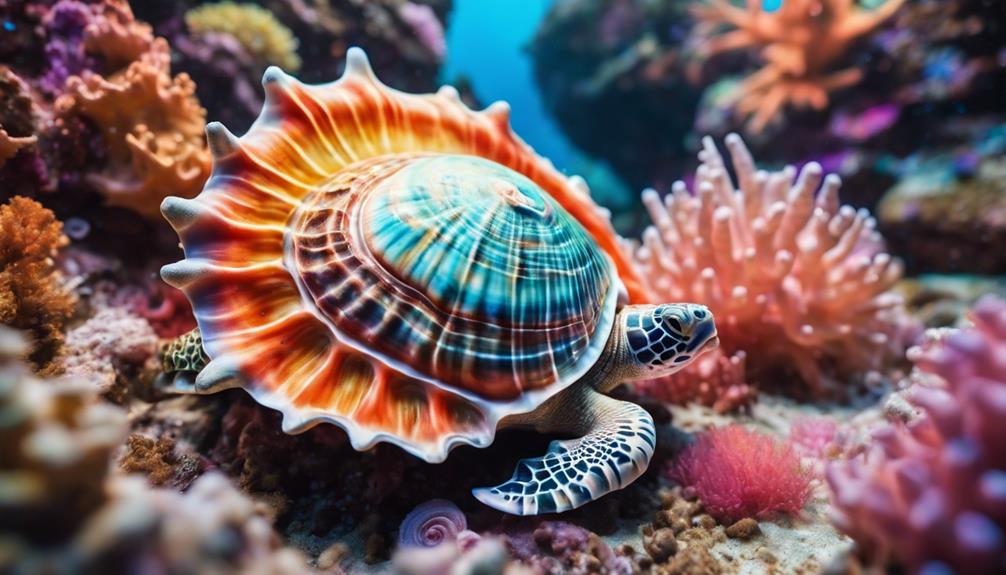
Conchs, like oysters, are marine mollusks known for their distinctive spiral shells and important ecological role in ocean environments. These fascinating creatures belong to the family of large sea snails and are commonly found in tropical waters around the world. One unique feature of conchs is their large, sturdy shells that provide protection from predators and harsh environmental conditions.
In addition to their physical attributes, conchs play a crucial role in marine ecosystems by controlling algae levels and serving as a food source for various predators like crabs, birds, and humans. Their shells are often used by hermit crabs as temporary homes, showcasing the interconnectedness of marine life.
Conchs are also popular in culinary dishes, with their meat being a delicacy in many coastal regions. However, overfishing and habitat destruction have led to a decline in conch populations in some areas, highlighting the importance of sustainable fishing practices and conservation efforts to protect these remarkable sea creatures for future generations.
Abalone
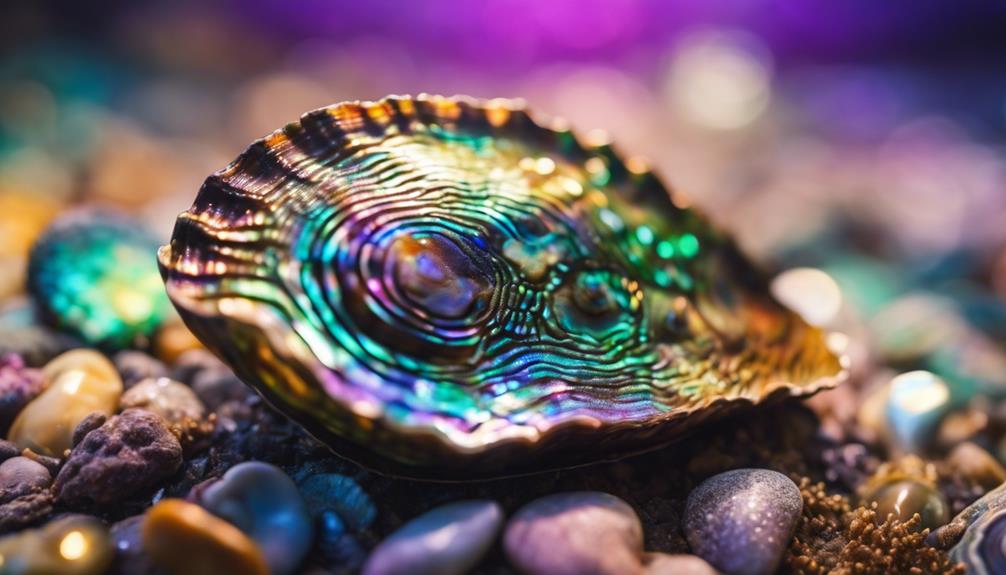
Abalones, marine mollusks known for their iridescent shells and unique anatomy, inhabit coastal waters worldwide. These fascinating creatures belong to the Haliotidae family and are highly prized for their colorful shells, which are often used in jewelry and decorative items. Abalones have a single, spiral-shaped shell with a series of small holes along the edge for breathing and expelling waste.
One remarkable feature of abalones is their muscular foot, which they use to cling to rocks and move across the ocean floor. This foot also helps them graze on algae and seaweed, their primary source of food. Abalones play an important role in maintaining the balance of marine ecosystems by controlling algae levels and providing habitat for other species.
Interestingly, abalones can live for many years, with some species reaching ages of up to 50 years. Their shells grow as they age, displaying a stunning array of colors that vary depending on the species and their diet. Observing these unique creatures in their natural habitat is a truly mesmerizing experience.
Nautilus
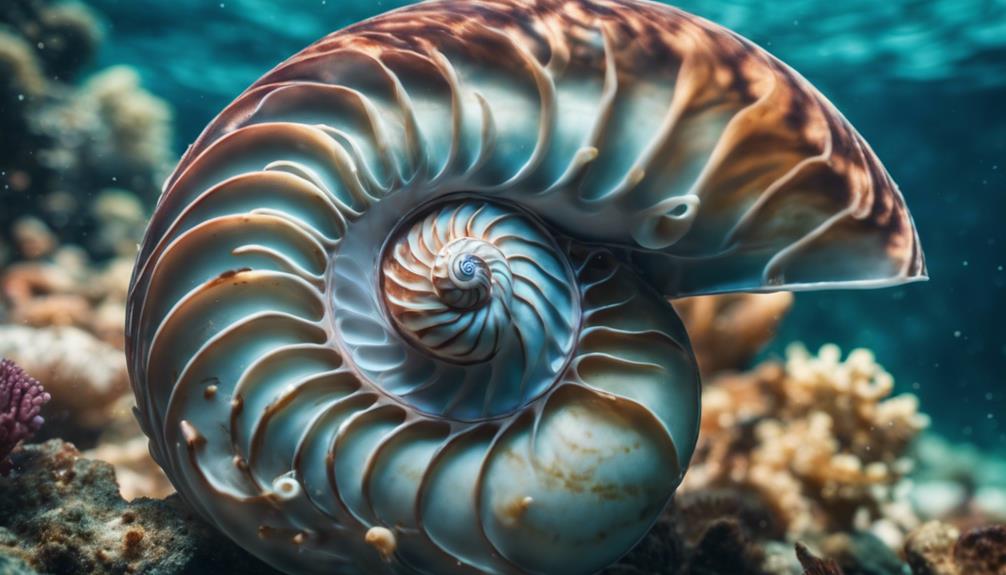
Nautilus, another fascinating sea creature with a unique shell, captures attention with its spiral-shaped beauty and intriguing characteristics. These creatures are cephalopods, related to octopuses and squids, but with distinct differences. Nautiluses have a beautiful, pearly shell that they use as protection, unlike their relatives. They inhabit deep waters in the Indo-Pacific region, where they gracefully swim using jet propulsion.
One remarkable trait of nautiluses is their ability to adjust their buoyancy by filling chambers within their shells with gas. This allows them to move up or down in the water column with ease. Nautiluses are known for their longevity, with some species living up to 20 years. Despite their ancient origins dating back millions of years, they remain mysterious creatures due to their elusive nature in the depths of the ocean.
Observing a nautilus in its natural habitat is a rare and awe-inspiring sight, showcasing the beauty and resilience of these unique sea animals.
Scallop
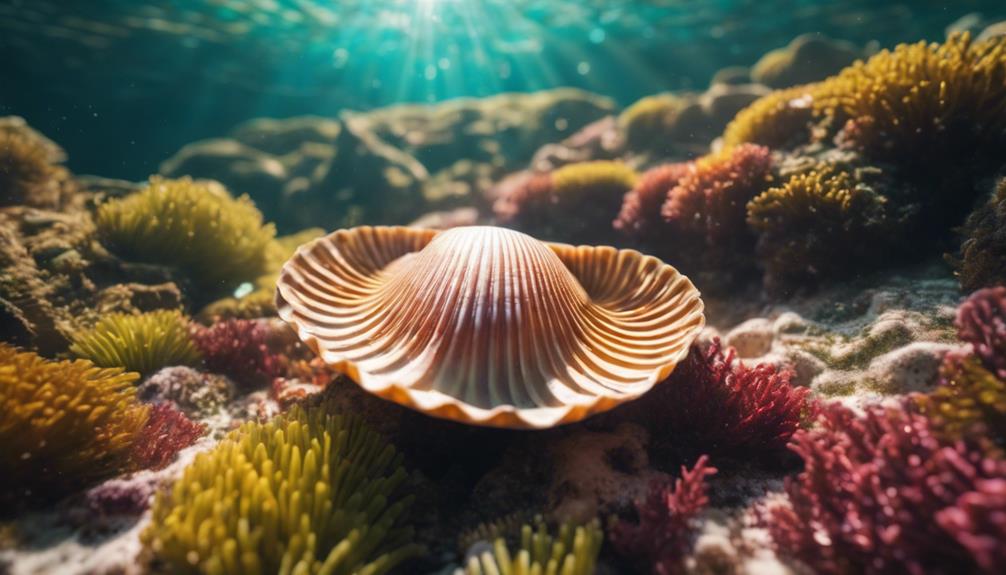
Scallops, known for their distinctive fan-shaped shells, are fascinating sea creatures found in oceans worldwide. These bivalve mollusks aren't only prized as a delicacy but also play essential roles in marine ecosystems.
You'll be amazed to learn that scallops can swim by rapidly clapping their shells together, propelling themselves through the water to escape predators or find better feeding grounds. This unique ability sets them apart from other shellfish.
As a scallop, you'll thrive in sandy or muddy seabeds, using your well-developed adductor muscles to filter feed on plankton and algae. Surprisingly, scallops have up to 100 vivid blue eyes lining the edges of their shells. These eyes detect changes in light and motion, helping them evade threats in their surroundings.
Next time you see a scallop shell, remember the remarkable creature that once inhabited it, gracefully moving through the ocean depths.
Cowrie
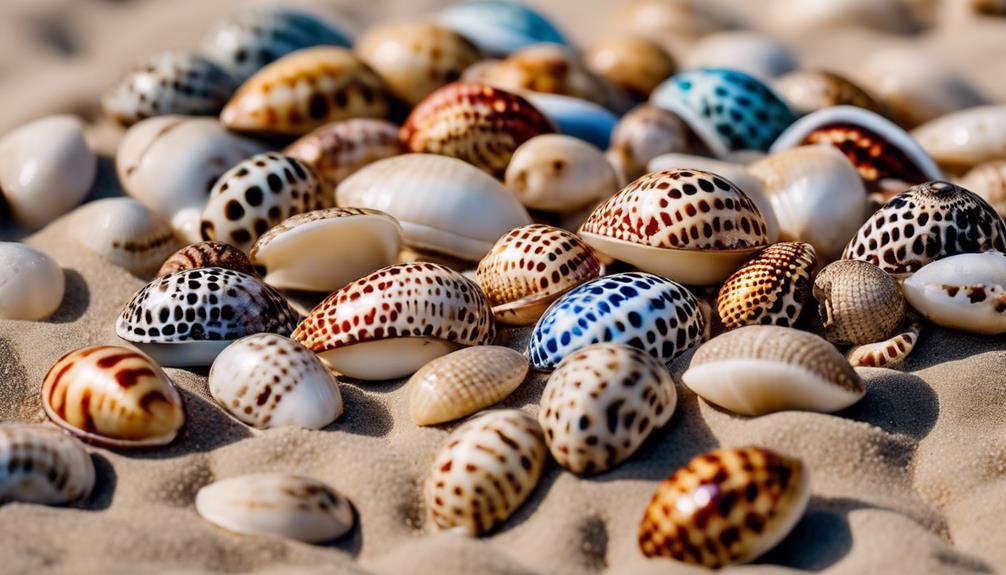
Gracefully gliding through tropical waters, the cowrie shell stands out with its smooth, glossy appearance. These shells, shaped like a slightly bent oval, come in various colors and patterns, making them prized by collectors and used in jewelry and traditional ceremonies. Cowries aren't just aesthetically pleasing; they also play a crucial role in marine ecosystems. As herbivores, cowries feed on algae, helping to maintain a balance in underwater plant populations.
Fascinatingly, cowrie shells have been used as currency in different cultures throughout history due to their unique beauty and rarity. In some regions, they're still used as decorative elements in clothing and accessories. These shells have a captivating history and cultural significance, making them more than just beautiful marine artifacts.
Next time you spot a cowrie shell, take a moment to appreciate its elegance and the important part it plays in the ocean's delicate ecosystem.
Chiton
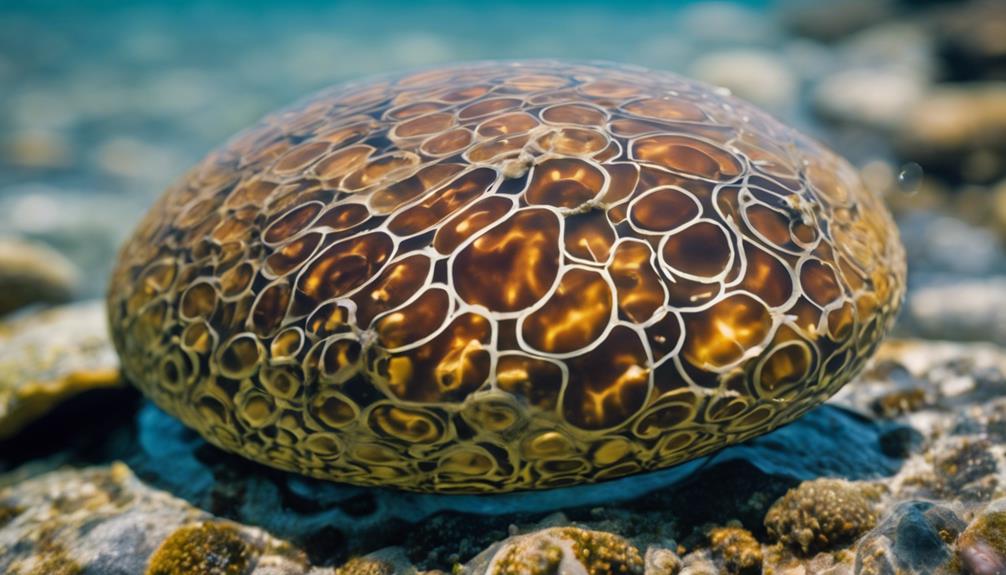
Chitons, small marine mollusks with overlapping shell plates, are known for their unique and crucial evolutionary history. These fascinating creatures belong to the class Polyplacophora and can be found in various marine habitats worldwide. With their distinctive shell made of eight separate plates, chitons are well-adapted to cling to rocks in intertidal zones and withstand the crashing waves.
One interesting fact about chitons is their ability to roll into a protective ball when threatened by predators, utilizing their muscular foot to curl up and shield their vulnerable underside. Despite their slow-moving nature, chitons play a critical role in marine ecosystems by grazing on algae and contributing to the balance of underwater plant life.
Next time you explore a rocky shoreline, keep an eye out for these resilient creatures showcasing their ancient lineage and unique shell structure. Chitons serve as a reminder of the diverse and fascinating marine life inhabiting our oceans.
Whelk
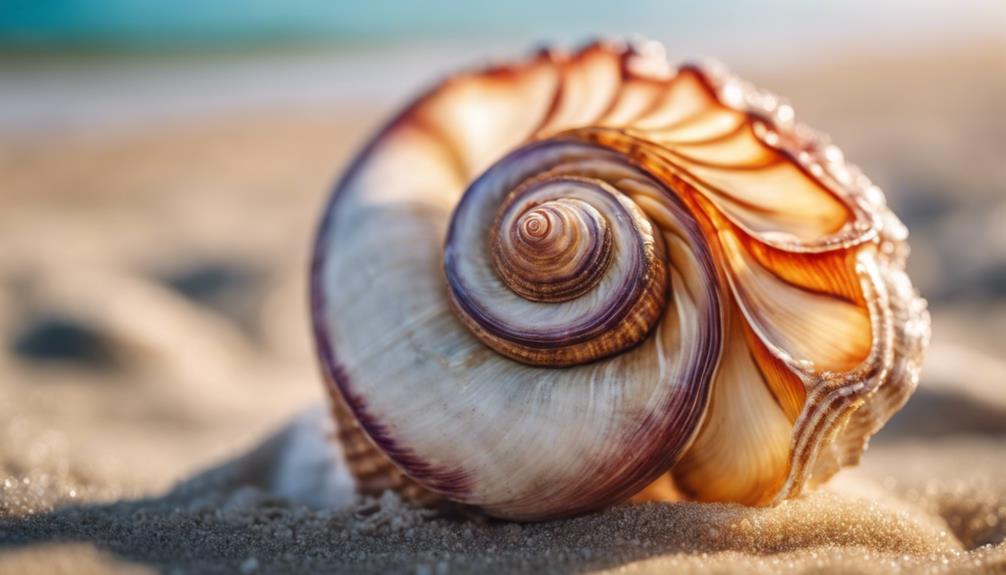
When exploring coastal waters, you may come across the fascinating and predatory marine gastropod known as the Whelk. These creatures are carnivorous snails with spiral shells that vary in size, shape, and color depending on the species. Whelks are skilled hunters, using their muscular foot to move and their radula (a rough tongue-like organ) to drill into the shells of their prey, such as clams and other mollusks.
One interesting fact about Whelks is that they've a special adaptation called an 'operculum,' which is a horny or calcareous plate that acts as a lid to seal their shell opening when they retreat inside for protection. This unique feature helps prevent desiccation and protects them from predators.
Whelks play a critical role in marine ecosystems by controlling the populations of their prey species. Their presence helps maintain the balance of the underwater food chain. Next time you're near the shore, keep an eye out for these intriguing creatures with their distinctive spiral shells.
Mollusk
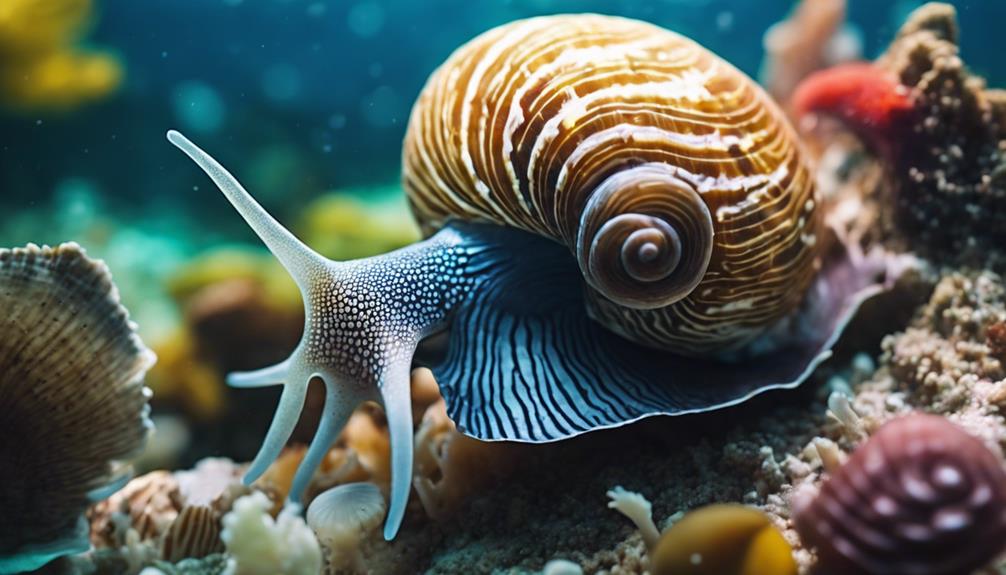
You can easily spot the diversity of mollusks in coastal environments, with their varied shapes, sizes, and colors adding a unique charm to the marine ecosystem. Mollusks are a fascinating group of sea animals with shells, including creatures like snails, clams, and octopuses. These invertebrates are known for their soft bodies and hard protective shells. Mollusks play essential roles in marine ecosystems, contributing to biodiversity and food chains.
One interesting fact about mollusks is their incredible adaptability to different habitats. From sandy beaches to deep-sea trenches, mollusks have managed to thrive in diverse environments worldwide. Their shells come in various forms, from spiral-shaped to smooth and elongated, serving as protection against predators and harsh conditions.
Next time you explore the coastal areas, keep an eye out for these fascinating creatures. Mollusks aren't only visually enthralling but also vital for maintaining the balance of marine ecosystems.
Turban Shell
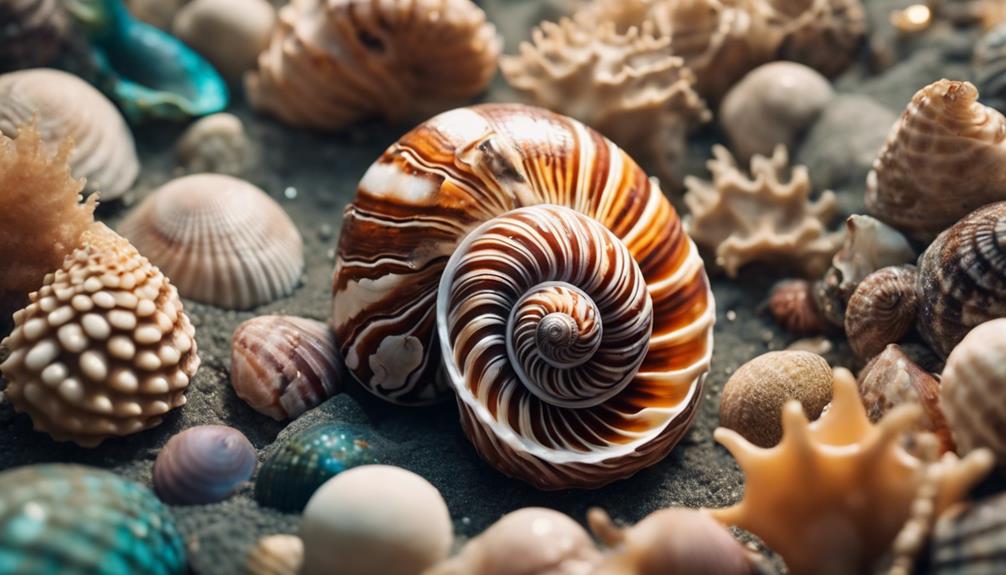
Admiring the striking spiral patterns of a Turban Shell along the shoreline adds a touch of elegance to your beachcombing experience. These marine gastropod mollusks, known for their smooth, glossy shells, belong to the family Turbinidae. As you hold a Turban Shell, notice its conical shape with a crucial spire and a wide body whorl. These shells come in various colors, from vibrant reds and purples to earthy browns and greens, enhancing their allure.
When you peer inside the opening of a Turban Shell, marvel at the iridescent mother-of-pearl lining, a natural masterpiece. These shells are often used in jewelry and crafts due to their beauty. In the ocean, Turban Shells play an essential role in the ecosystem by grazing on algae and detritus, contributing to nutrient cycling.
Next time you spot a Turban Shell on your beach stroll, take a moment to appreciate its beauty and ecological significance in the vast underwater world.

Erzsebet Frey (Eli Frey) is an ecologist and online entrepreneur with a Master of Science in Ecology from the University of Belgrade. Originally from Serbia, she has lived in Sri Lanka since 2017. Eli has worked internationally in countries like Oman, Brazil, Germany, and Sri Lanka. In 2018, she expanded into SEO and blogging, completing courses from UC Davis and Edinburgh. Eli has founded multiple websites focused on biology, ecology, environmental science, sustainable and simple living, and outdoor activities. She enjoys creating nature and simple living videos on YouTube and participates in speleology, diving, and hiking.
🌿 Explore the Wild Side!
Discover eBooks, guides, templates and stylish wildlife-themed T-shirts, notebooks, scrunchies, bandanas, and tote bags. Perfect for nature lovers and wildlife enthusiasts!
Visit My Shop →
